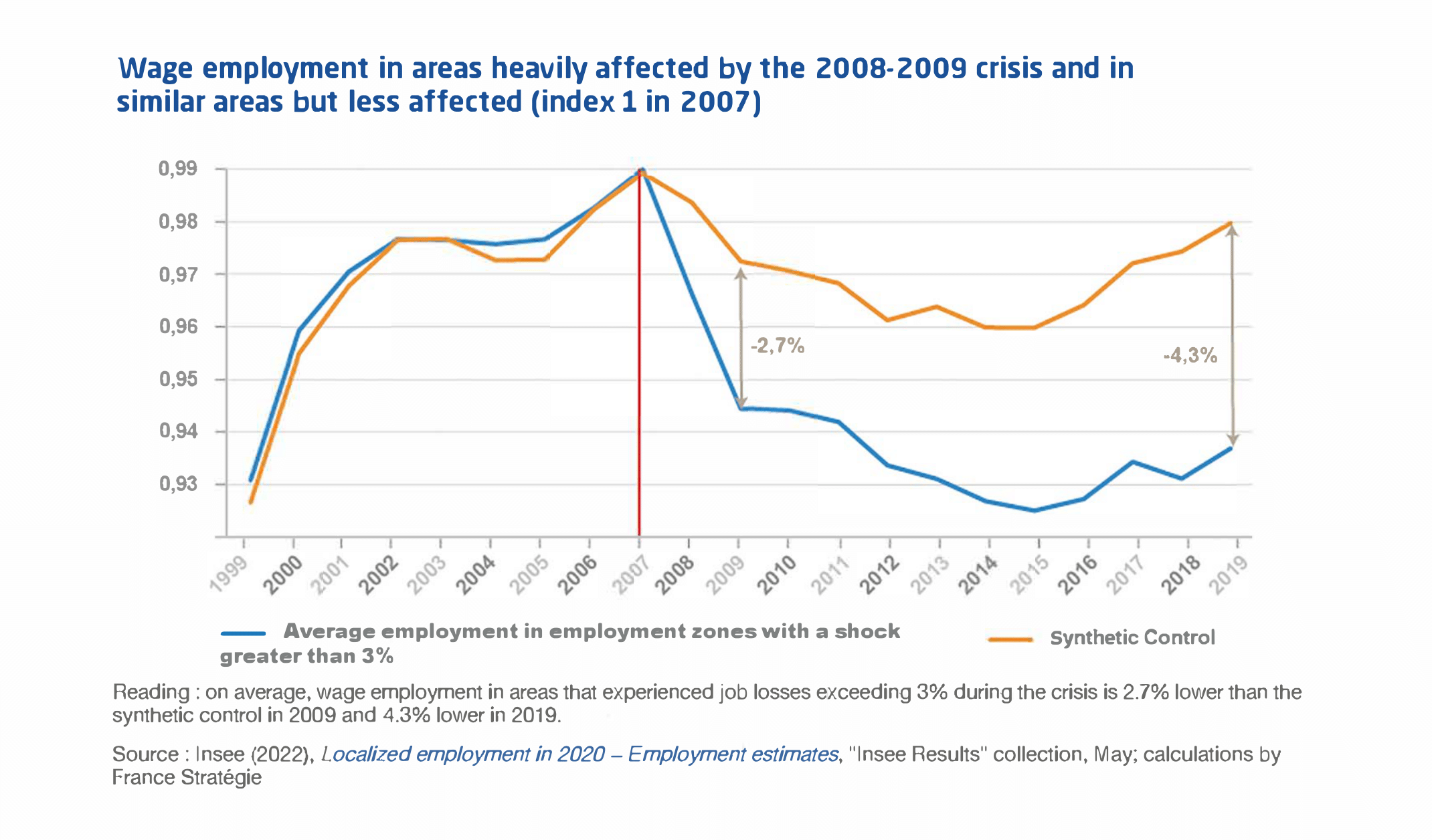
Employment in areas that experienced significant job losses during the crisis diverged from those with similar characteristics but who were less or not affected. While the initial decline in wage employment averaged 2.7% in 2009 compared to these areas, it was 4.3% in 2019. The estimated multiplier effect is approximately 1.6: the loss of one job during the financial crisis results in 1.6 fewer jobs in 2019. Thus, a significant shock during a short period can leave lasting scars that worsen over the years.
Furthermore, the amplification over time of the employment gap between the most affected areas and those less affected is mainly due to a decline in non-industrial employment. Indeed, while the gap for industrial jobs stabilizes from 2010 onwards, the gap for non-industrial employment increases over time.
These results remain valid when considering separately the areas that were dynamic before the crisis and those that were losing momentum. However, it appears that the negative employment shock has a greater impact in the former than in the latter.
Beyond the average results presented above, it is noted that over half (54%) of the areas heavily impacted by the crisis still have employment in 2019 significantly lower than it would have been without the job destructions of the years 2008-2009. The impact on employment for these areas can be considerable: for half of them, the decrease in employment is greater than 8.8% (compared to areas with comparable dynamics before 2008-2009) and, for a quarter of these areas, it exceeds 10.2%.

Read the full document in french








